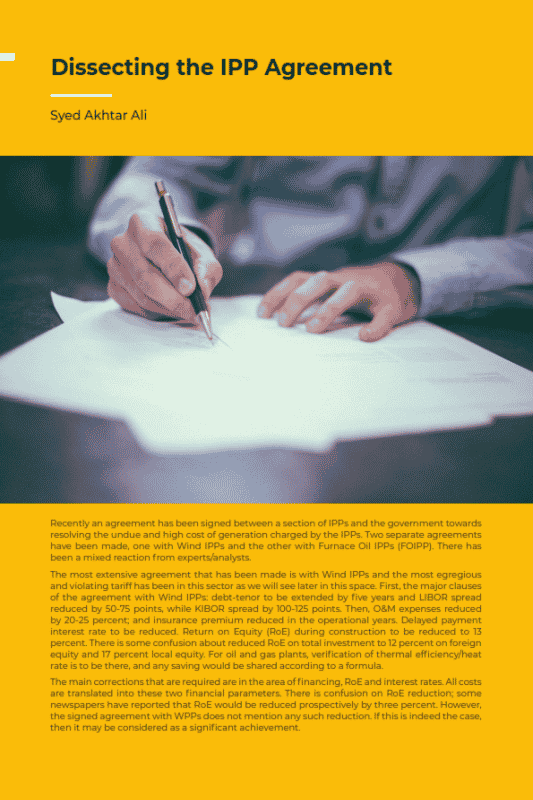
Pakistan Institute of Development Economics
- Home
Our Portals
MenuMenuMenuMenuMenuMenuMenu - ResearchMenuMenuMenuMenuMenuMenuMenu
- Discourse
- The PDR
- Our Researchers
- Academics
- Degree Verification
- Thesis Portal
- Our Portals
Dissecting the IPP Agreement
Recently an agreement has been signed between a section of IPPs and the government towards resolving the undue and high cost of generation charged by the IPPs. Two separate agreements have been made, one with Wind IPPs and the other with Furnace Oil IPPs (FOIPP). There has been a mixed reaction from experts/analysts. The most extensive agreement that has been made is with Wind IPPs and the most egregious and violating tariff has been in this sector as we will see later in this space. First, the major clauses of the agreement with Wind IPPs: debt-tenor to be extended by five years and LIBOR spread reduced by 50-75 points, while KIBOR spread by 100-125 points. Then, O&M expenses reduced by 20-25 percent; and insurance premium reduced in the operational years. Delayed payment interest rate to be reduced. Return on Equity (RoE) during construction to be reduced to 13 percent. There is some confusion about reduced RoE on total investment to 12 percent on foreign equity and 17 percent local equity. For oil and gas plants, verification of thermal efficiency/heat rate is to be there, and any saving would be shared according to a formula. The main corrections that are required are in the area of financing, RoE and interest rates. All costs are translated into these two financial parameters. There is confusion on RoE reduction; some newspapers have reported that RoE would be reduced prospectively by three percent. However, the signed agreement with WPPs does not mention any such reduction. If this is indeed the case, then it may be considered as a significant achievement.



